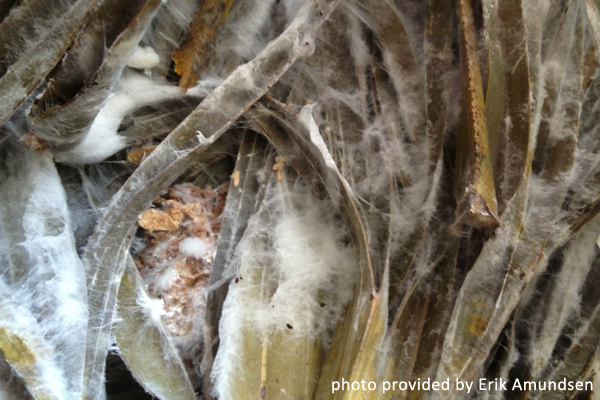One of the most valuable experiences I had at h.e.a.r.t. was the student project. Each student is given a budget, time and resources to learn about a particular topic of interest in doing development work. I chose growing mushrooms because it was something that I knew nothing about and had wanted to try for a while.
The mushroom is actually the “fruit” of a larger organism that is living under ground or in the log that the mushroom is growing on. The underground portion of the fungus is called the mycelium and it is millions of tiny hair-like strands that act as a root system.
In one square inch of soil there can be 8 miles worth of these strands and a single mat of mycelium can spread for acres.
So a mushroom is the “fruit” of the mycelium just as an apple is the fruit of an apple tree. When the conditions are right (food source, temperature, humidity and light), the mycelium produce mushrooms that will release millions of spores into the air. The spores land in far away places and can start growing more mycelium.

mycelium running through coffee grounds
The process of growing mushrooms is essentially introducing the fungus to anything it can grow on and digest as food. In the wild, mycelium will decompose any organic woody substance that it comes across including dead branches, leaves, grass, roots, and fallen trees. When growing mushrooms, you must choose the type of mushroom you want to grow and then find out which types of material it grows best on. This material is called the substrate. After you have gathered enough of your substrate you must pasteurize it with heat, cold, or soft chemicals (lime or hydrogen peroxide). This gives the mycelium time to spread on the substrate before other molds or unwanted fungus can grow on it.

mycelium running through palmetto fronds
The next step is introducing the mycelium to the substrate. In order to introduce the type of mushroom you want to grow, you need to add some material that already has the mycelium growing on it. This is called the spawn. The spawn is often a grain (rye grain, millet, oats) but can also be pieces of straw, wood chips or even cardboard. The spawn is mixed throughout the substrate and the mycelium will spread from each individual grain onto the surrounding materials. Inoculating the substrate with mycelium can be done in plastic bags, glass jars, outdoors in the ground or even directly on a log.
Then you wait.
It can take a few weeks to a few months for the mycelium to fully spread and start to decompose the substrate. When the mycelium is ready to produce mushrooms you increase the amount of air and water that it is getting and tiny “pinhead” mushrooms will start to form. At this point, the mushrooms grow very rapidly, sometimes doubling in size every day.
Erik is a garden enthusiast whose hobbies include cheese making, cooking, traveling and playing the mandolin. Erik and his wife, Kristina, completed the Spring 2013 term at h.e.a.r.t. and are preparing to serve as missionaries with the Covenant Church in Ecuador.


